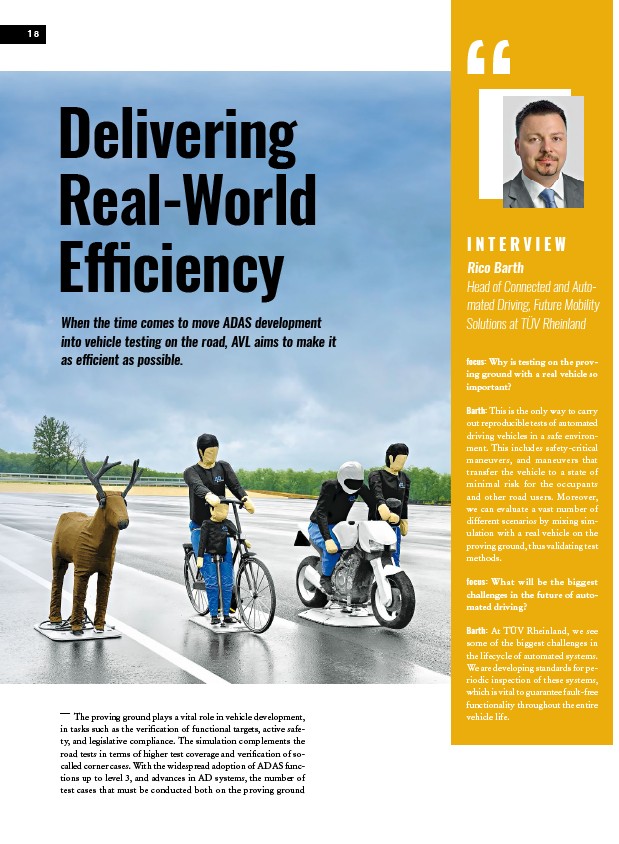
“
I N T E R V I E W
Rico Barth
Head of Connected and Auto-mated
Driving, Future Mobility
Solutions at TÜV Rheinland
focus: Why is testing on the prov-ing
ground with a real vehicle so
important?
Barth: This is the only way to carry
out reproducible tests of automated
driving vehicles in a safe environ-ment.
This includes safety-critical
maneuvers, and maneuvers that
transfer the vehicle to a state of
minimal risk for the occupants
and other road users. Moreover,
we can evaluate a vast number of
different scenarios by mixing sim-ulation
with a real vehicle on the
proving ground, thus validating test
methods.
focus: What will be the biggest
challenges in the future of auto-mated
driving?
Barth: At TÜV Rheinland, we see
some of the biggest challenges in
the lifecycle of automated systems.
We are developing standards for pe-riodic
inspection of these systems,
which is vital to guarantee fault-free
functionality throughout the entire
vehicle life.
1 8
Delivering
Real-World
Efficiency
When the time comes to move ADAS development
into vehicle testing on the road, AVL aims to make it
as efficient as possible.
The proving ground plays a vital role in vehicle development,
in tasks such as the verification of functional targets, active safe-ty,
and legislative compliance. The simulation complements the
road tests in terms of higher test coverage and verification of so-called
corner cases. With the widespread adoption of ADAS func-tions
up to level 3, and advances in AD systems, the number of
test cases that must be conducted both on the proving ground